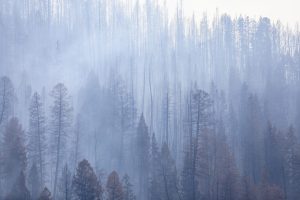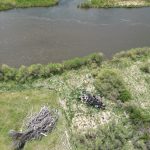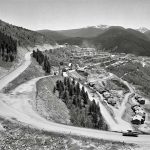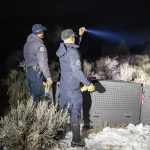Eagle River Fire could have been much worse if it jumped Interstate 70
Jumping into Red Canyon could have been 'Grizzly Creek 2'

FireFollow-VDN-090923-1-1
Hugh Fairfield-Smith for a long time has driven past the site of Thursday’s Eagle River Fire and thought it was a bad place for a fire. He was right.
Fairfield-Smith, the wildland fire specialist with the Greater Eagle Fire Protection District, said a two-vehicle accident on Interstate 70 resulted in a car fire in terrain that was dry and ready to burn hot and fast. Driven by winds of 25 mph or more, that’s exactly what happened.

Fairfield-Smith said the vegetation in the burn zone — including some sage bushes 15 feet tall — was dry, and primed to catch fire and spread.
There’s little or no vegetation left in much of the 27-acre fire site now. Around 75 firefighters responded to the incident Thursday and had the blaze under control by 11 p.m. About 65 people remained on site Friday for mop-up operations.
Some of that mop-up work includes checking railroad ties in the burn zone. Those ties are soaked in flammable materials, which means they can catch quickly and burn for a long time. Fairfield-Smith said several of those ties were completely consumed. Others continued to smolder.

Support Local Journalism
The burn zone is in the Greater Eagle Fire Protection District, but it was quickly clear the fire was going to be more than just those firefighters could handle. Help came quickly from Gypsum, Vail and the Eagle River Fire District. More help came from as far away as Aspen, Leadville and Summit County, as well as the Eagle Valley Wildland and the Upper Colorado Interagency Fire Management Unit. That regional unit was involved in a second fire Thursday, close to the Colorado-Utah state line.

Fairfield-Smith said firefighting efforts were quickly bolstered when two hand crews — about 40 people — pulled out of wildfire mitigation work north of the Shaw Cancer Center and quickly arrived on-site at the Eagle River Fire.
The amount of people and equipment on the fire helped keep the fire on the south side of I-70.
Make staying informed the easiest part of your day.
Sign up for daily or weekly newsletters at VailDaily.com/newsletter
“We were concerned it was going to jump the highway,” Fairfield-Smith said. That jump, if it happened, could have been a kind of replay of the 2020 Grizzly Creek Fire in Glenwood Canyon. That fire, which eventually burned more than 32,000 acres — 50 square miles — became difficult to fight and burned for a long time once it left the canyon floor and jumped into the surrounding hills.

Like Glenwood Canyon, Red Canyon is a choke point for traffic, with only two through roads and long detours as the only alternatives.
27: Acres burned on the Eagle River Fire
10: Fire trucks on the scene
75: Firefighters on the scene at one point
40: Firefighters who responded were members of two hand crews working near Edwards










